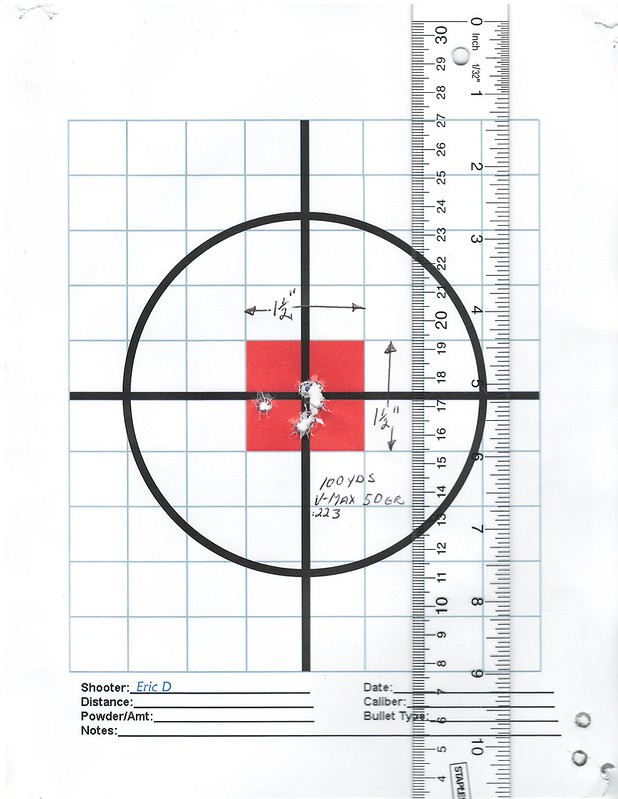


 hello,
hello,So my old method was load 10 of a few suggested loads (not going over max) and keep the best. That worked well enough but I wanted to try something to conserve a bit of ammo and maybe even get better accuracy.
Here are my results from 4 ladders at 200 yards. They were transferred from the original targets for ease of interpretation.
This is my first attempt at this and the weather was pretty bad. Rainy and windy. I can pretty consistently shoot moa or under but I do make mistakes.
I've wrote on them where I see a node and the vertical distance but please feel free to share your knowledge. One thing I've noticed is most of the nodes are on the lower end. I don't have a chrono but want loads that are still good at 3-500.
All were shot with 8208xbr
1: 50 gr vmax
2: 55 gr vmax
3: 68 gr hornady match
4: 69 gr Sierra matchking
Thanks for your time


